Abstract
1. To find the site where morphine acts when producing hyperglycaemia on injection into the cerebral ventricles in unanaesthetized cats, morphine sulphate was infused or injected through an implanted Collison cannula into different parts of the liquor space in an amount of 0·75 mg except on microinfusion into the posterior hypothalamus, when the amounts were 80 or 160 μg. The glucose was determined in blood samples collected from the inferior vena cava.
2. Microinfusions of morphine into the posterior hypothalamus did not produce hyperglycaemia.
3. Infusion of morphine into the liquor space at the entrance of the aqueduct or of the fourth ventricle produced hyperglycaemia. Any structures in the walls of the third ventricle as well as the peri-aqueductal grey are thus excluded as the site of action.
4. Infusion of morphine into the subarachnoid space just above the corpora quadrigemina or below the ventral surface of the brain stem produced hyperglycaemia. With these routes the morphine does not enter any part of the ventricular cavities and the action would appear to be on structures at the ventral surface of the brain stem.
5. Injection of morphine into the cisterna magna produces hyperglycaemia when the doses are larger than those already effective on injection into the cerebral ventricles. This also suggests an action on structures at the ventral surface of the brain stem, as this surface is reached more readily from the ventricles than from the cisterna.
6. It is concluded that on injection into the cerebral ventricles, the morphine has to pass into the subarachnoid space, through the foramina of Luschka, in order to produce hyperglycaemia. It then reaches the ventral surface of the brain stem and probably acts there on structures in the upper part of the medulla oblongata.
7. Infusion of morphine into the corpora quadrigemina near the caudal end of the superior corpora can produce profound hypoglycaemia.
8. Anaesthesia depresses the morphine hyperglycaemia, but when the dose injected into the cerebral ventricles is increased four times or more, hyperglycaemia is also produced in pentobarbitone sodium anaesthesia.
Full text
PDF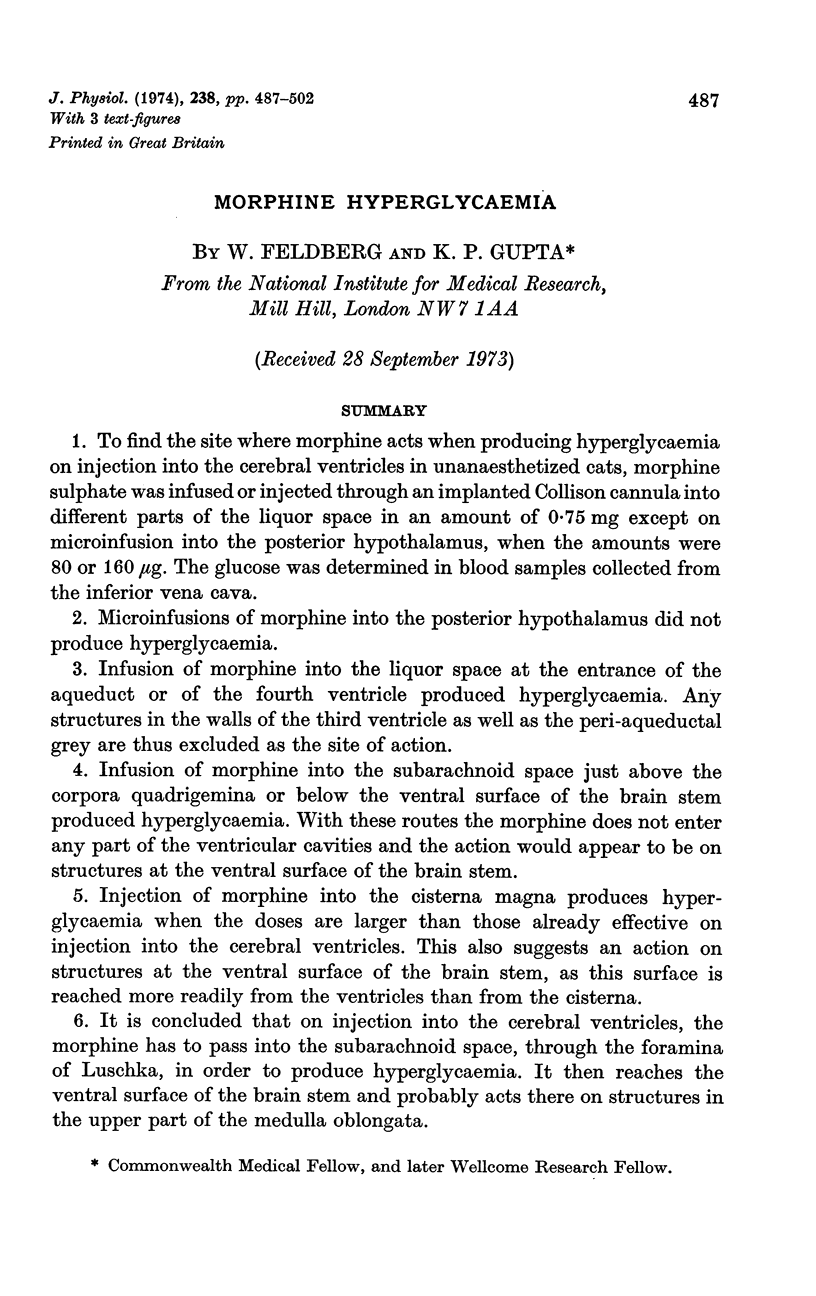
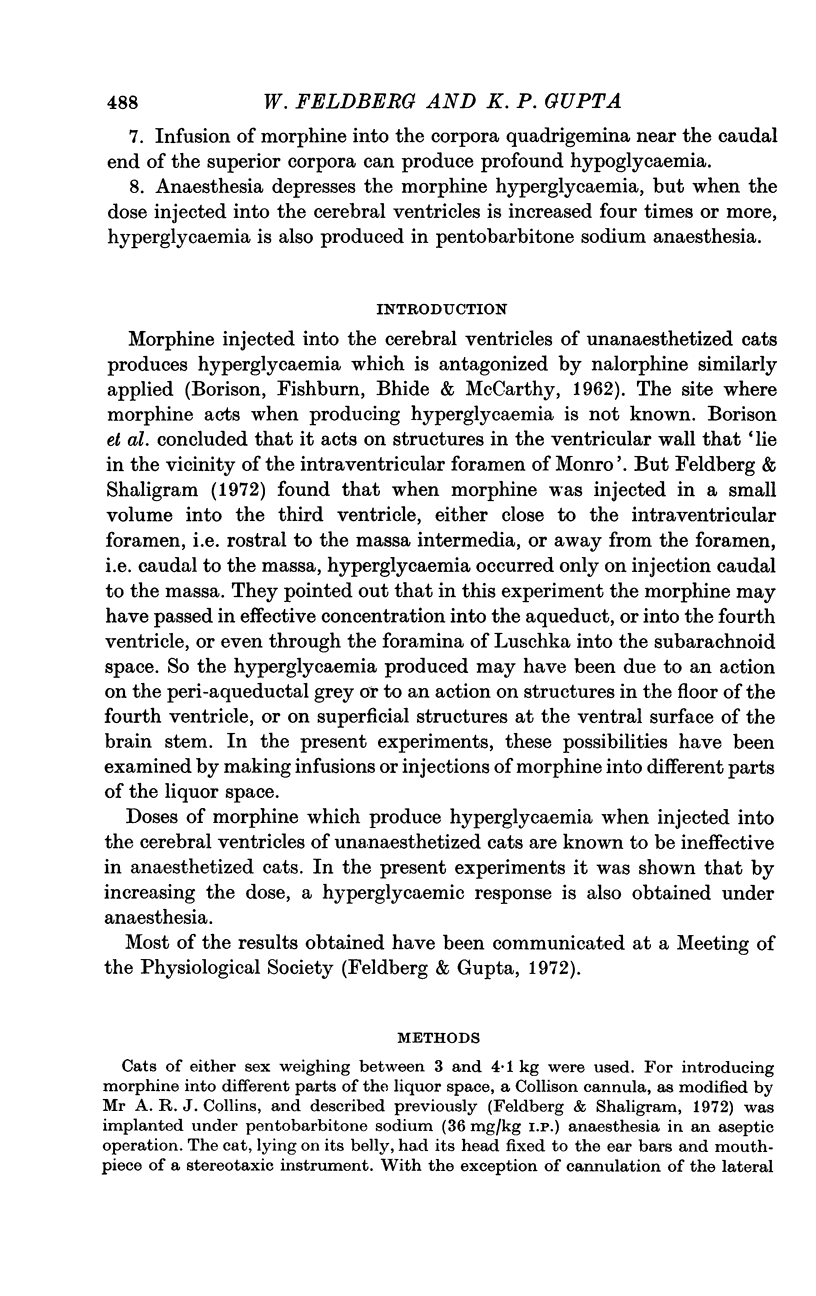
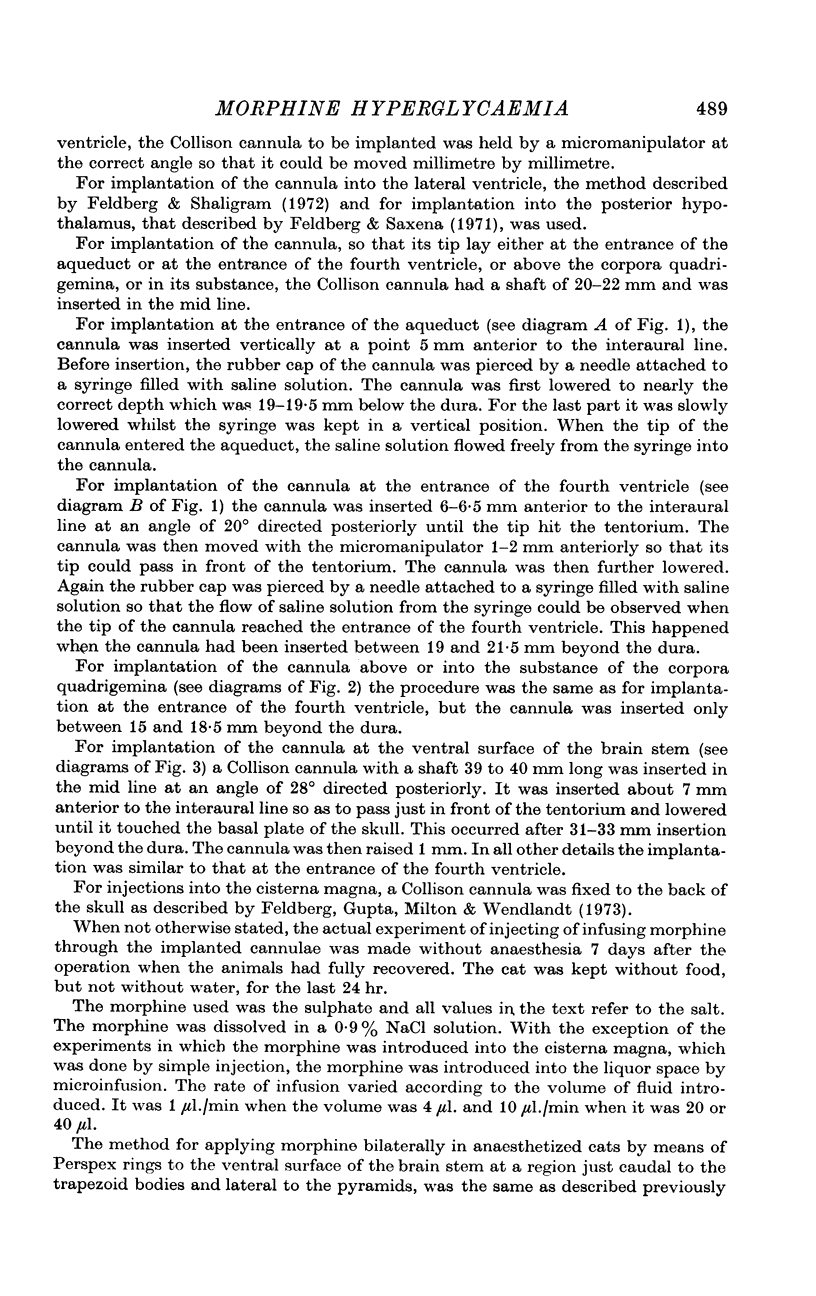
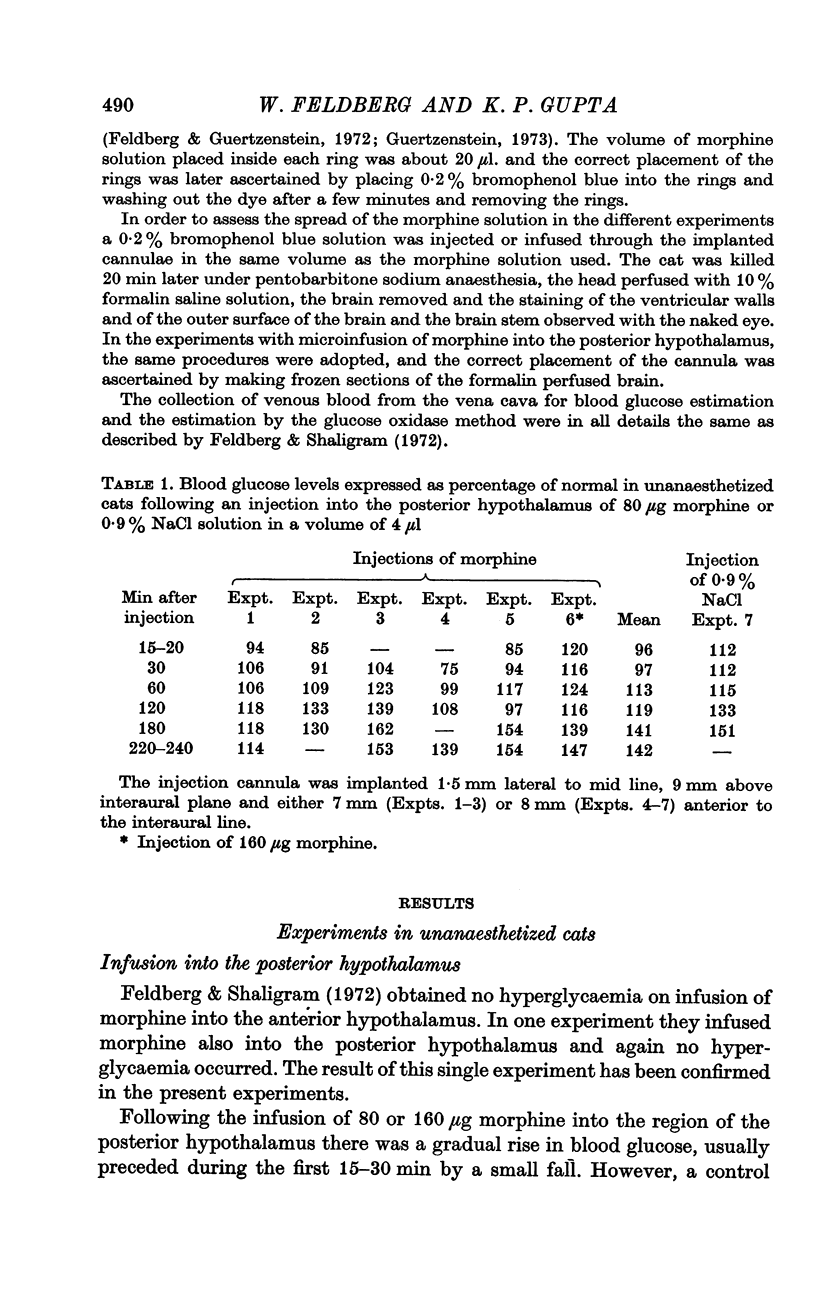
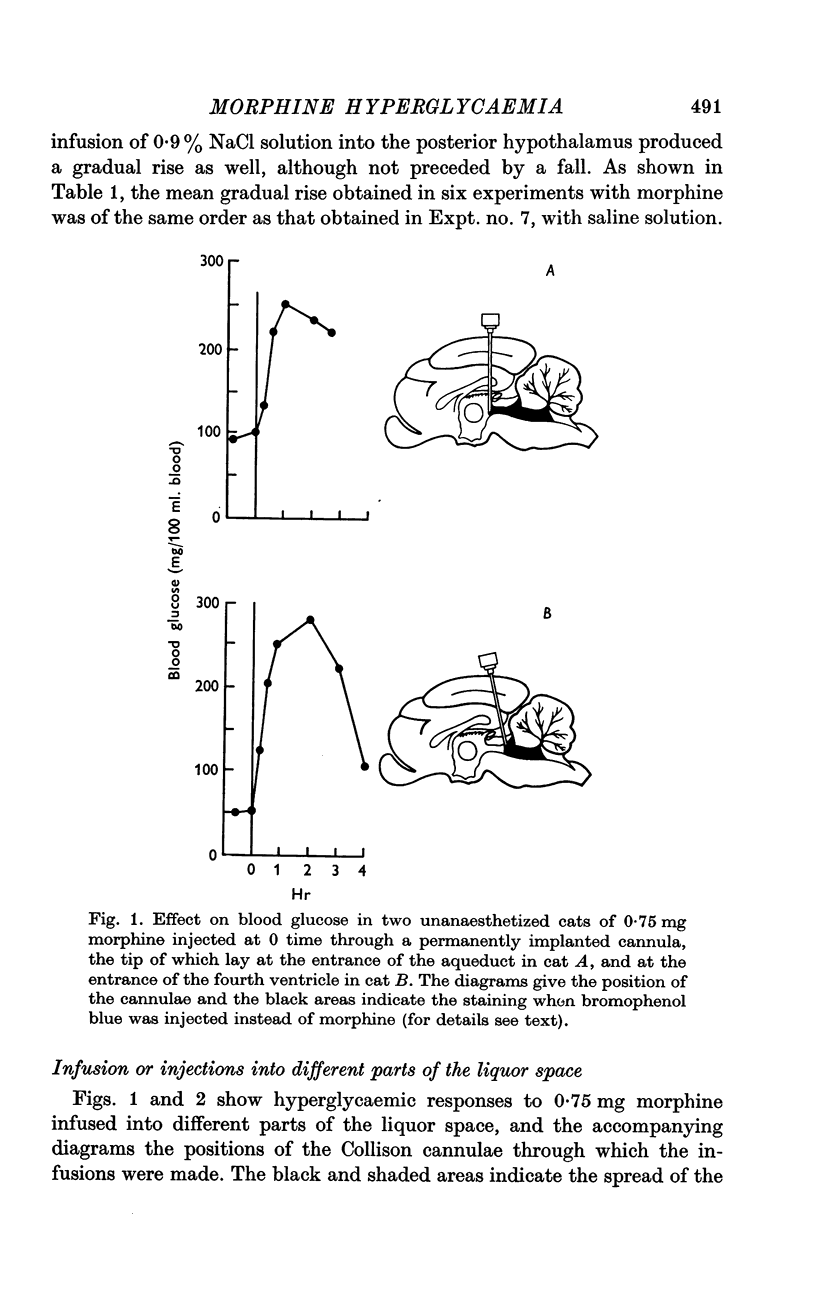
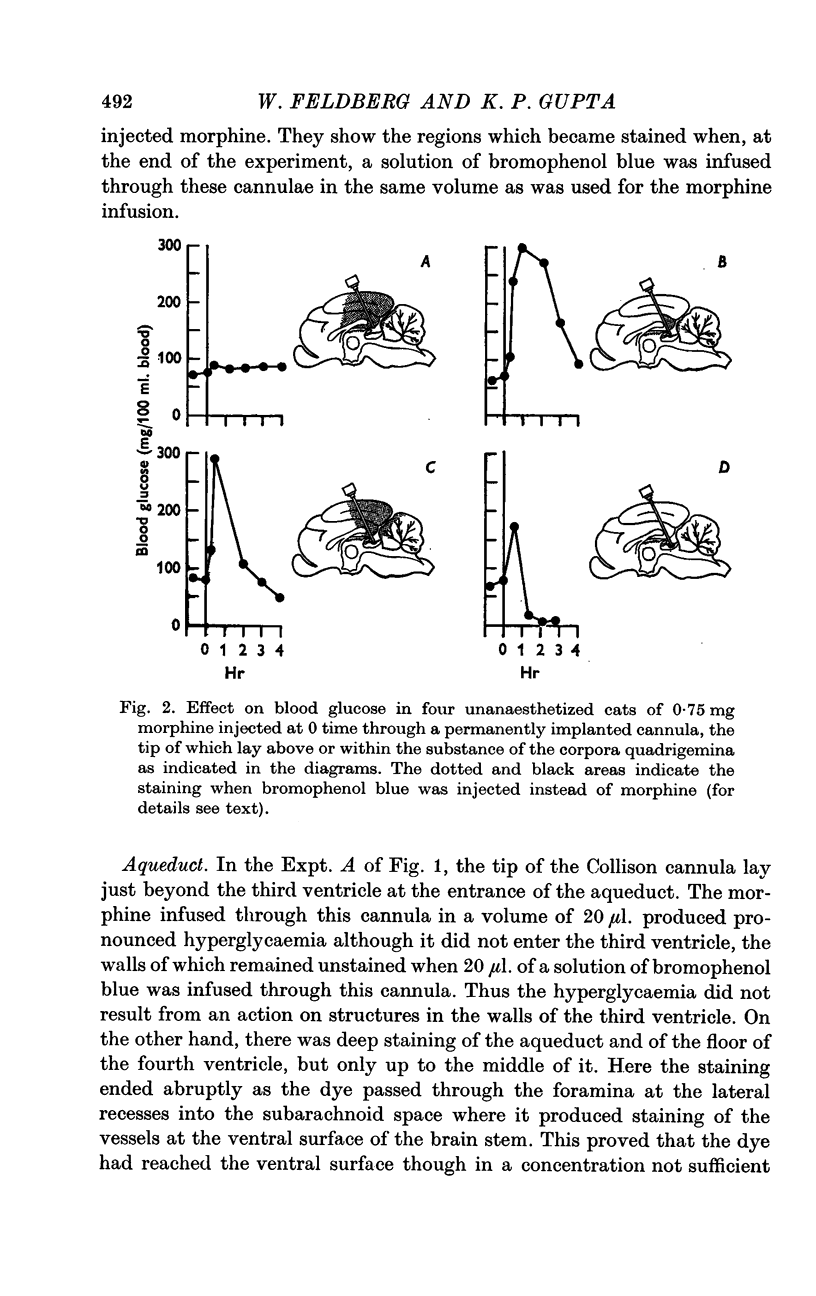
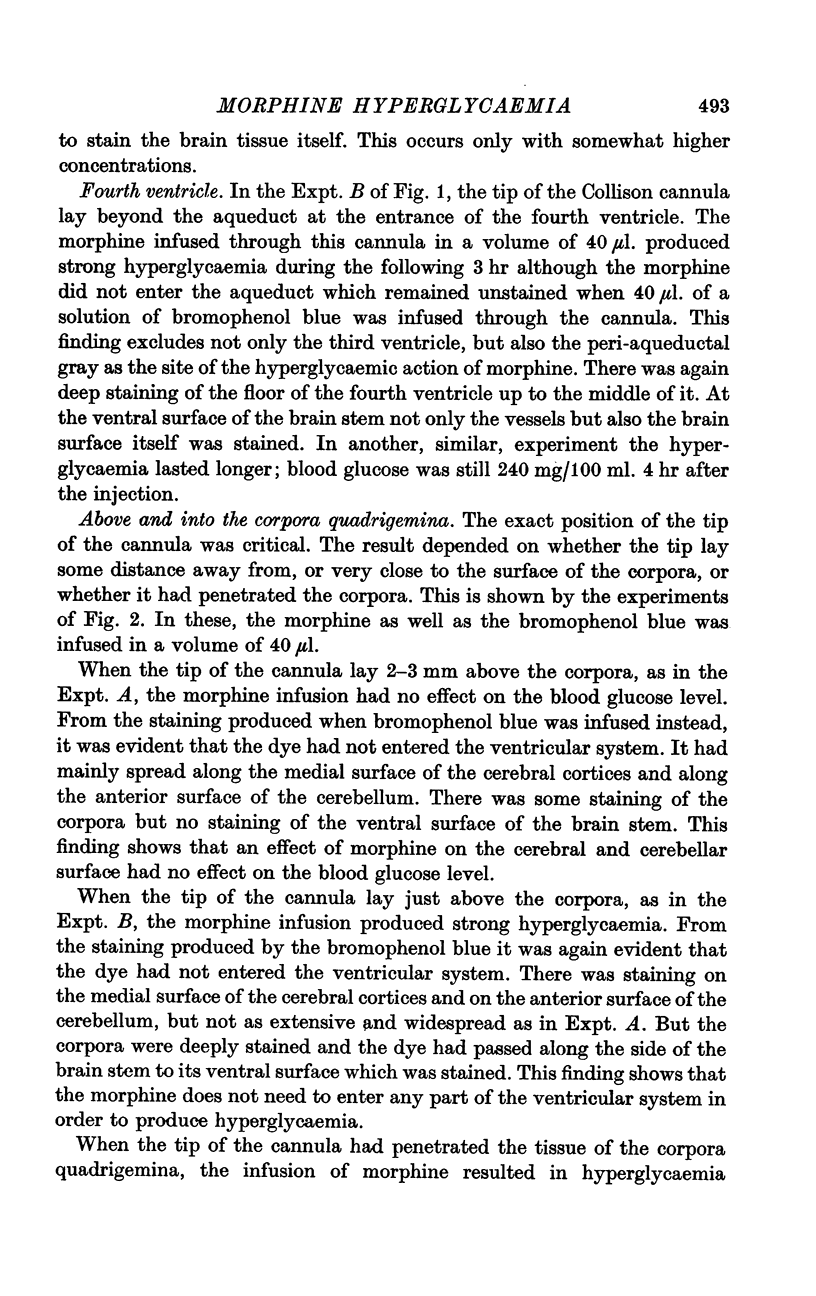
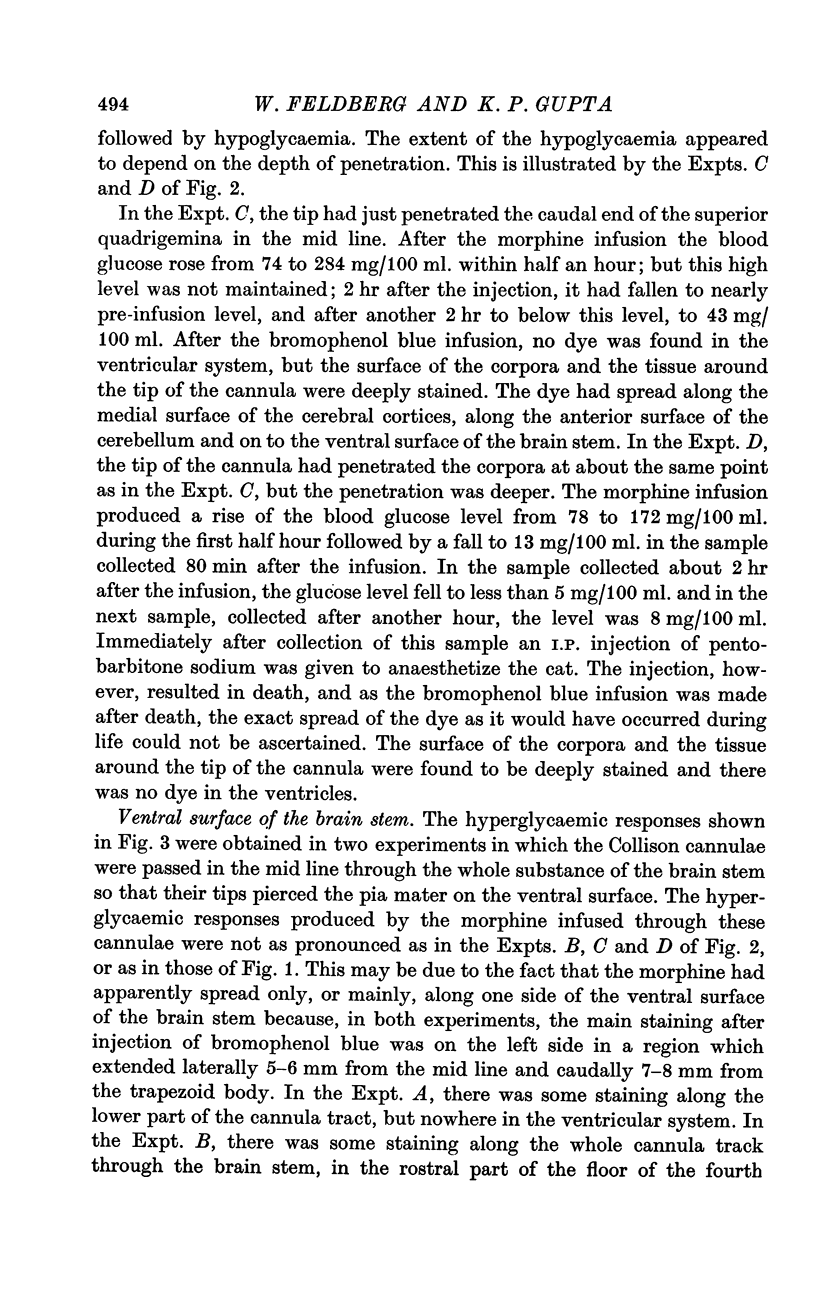
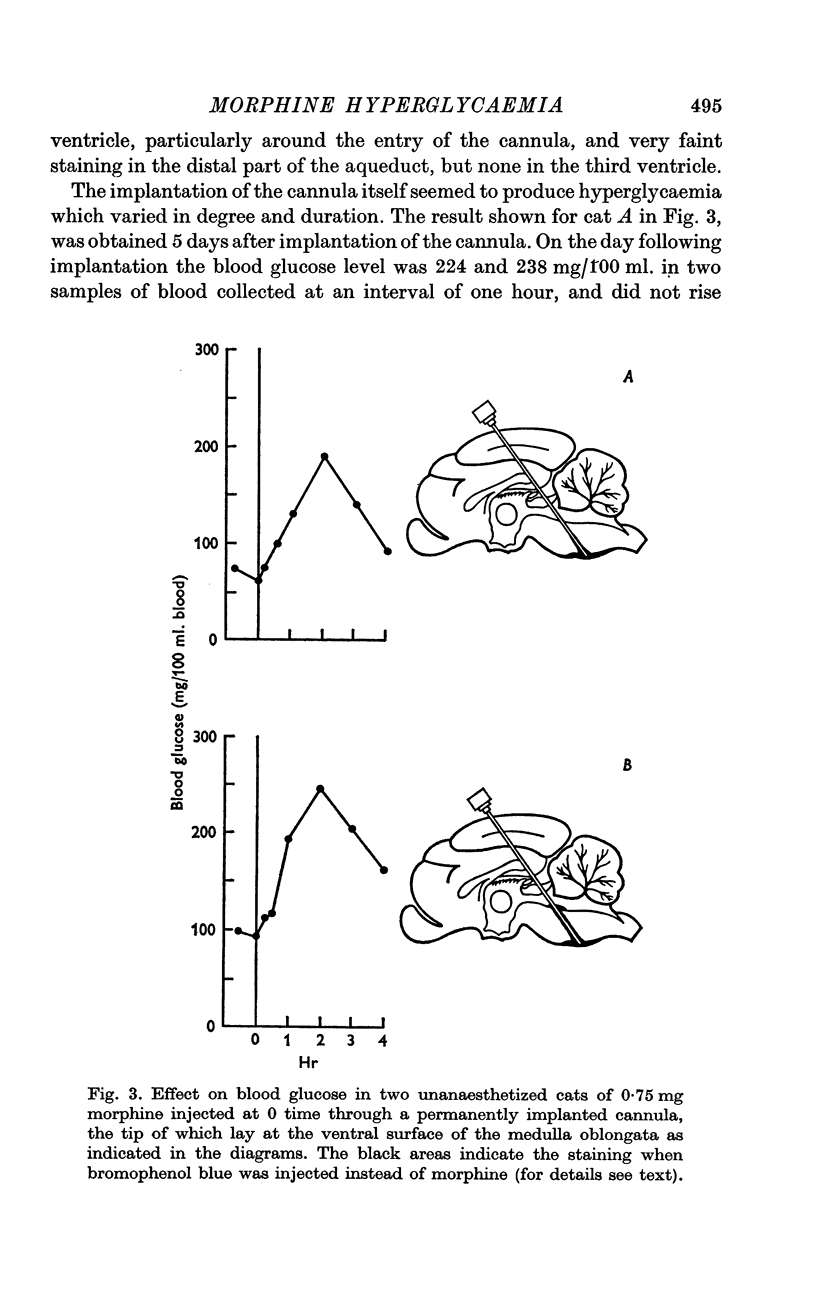

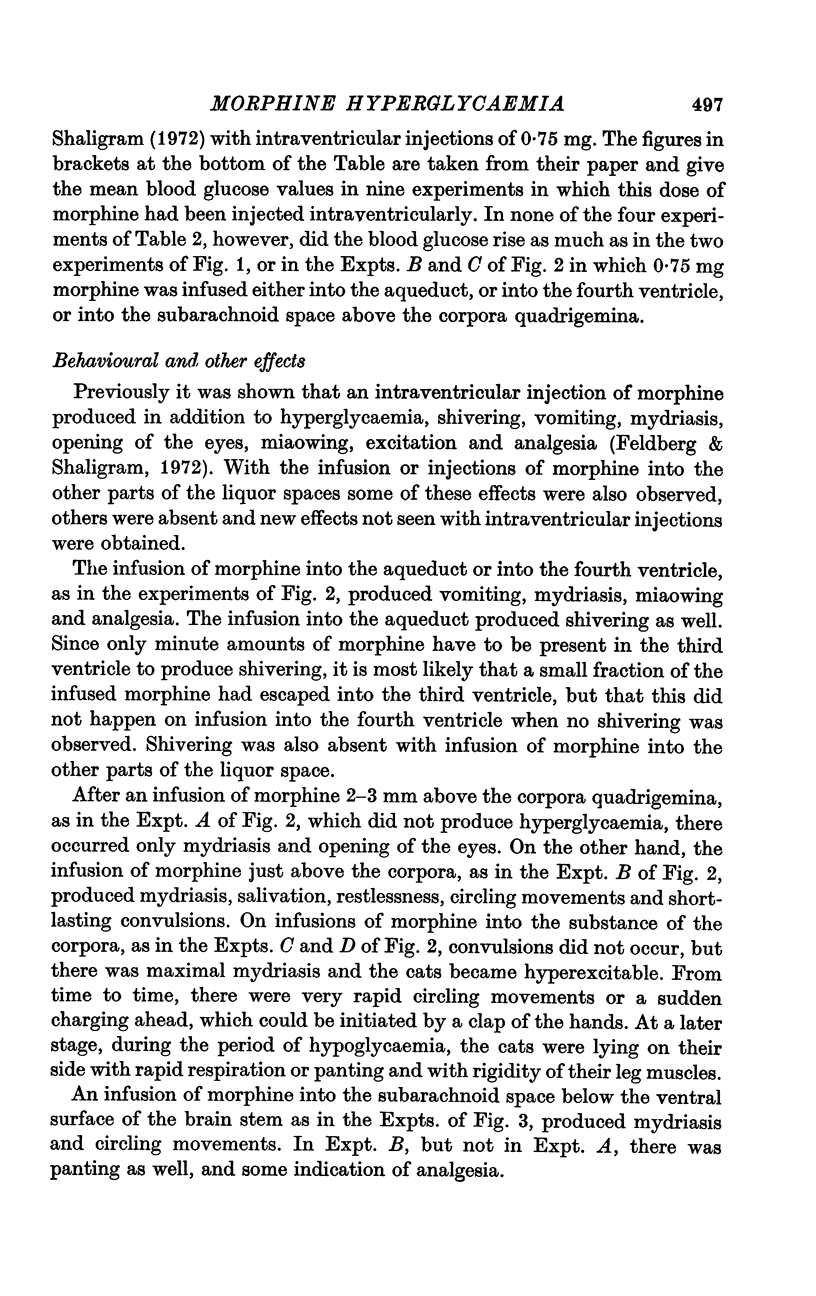
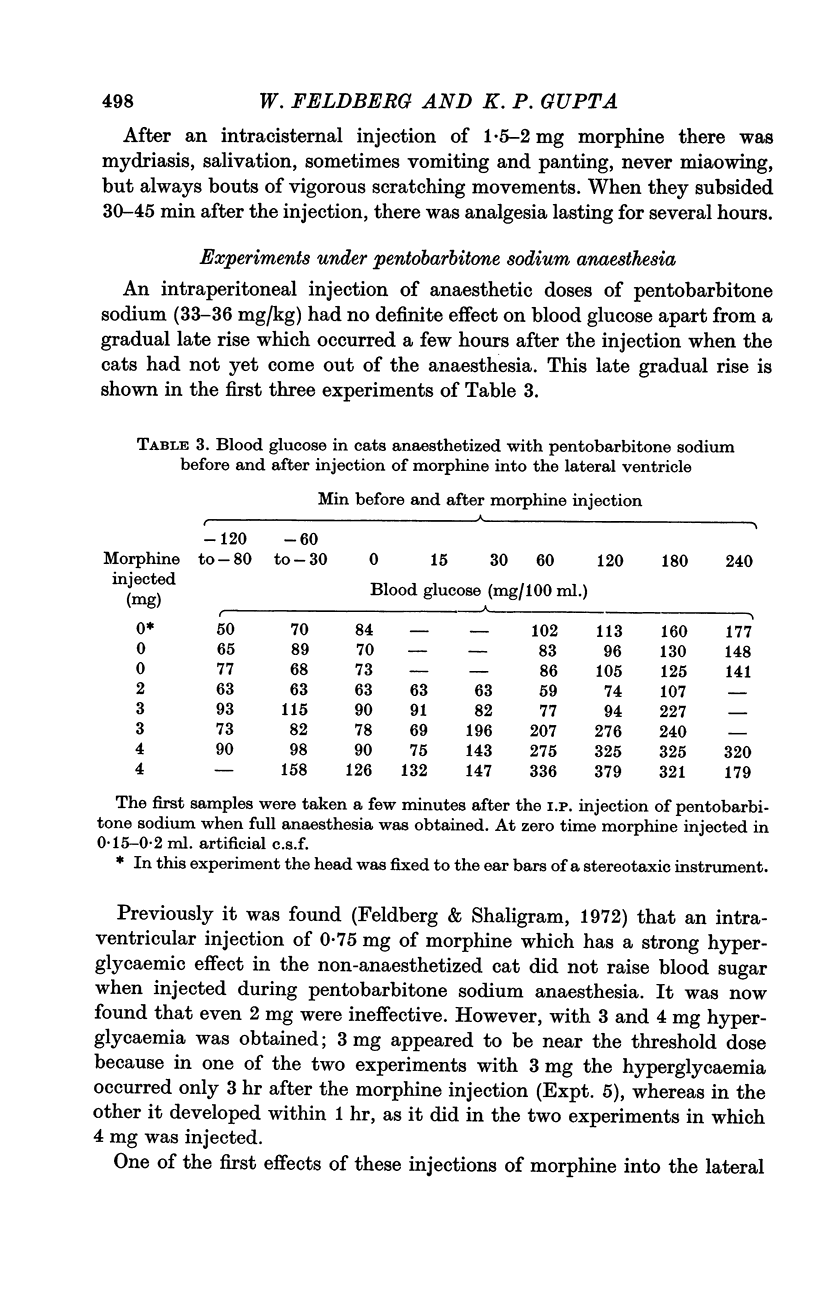
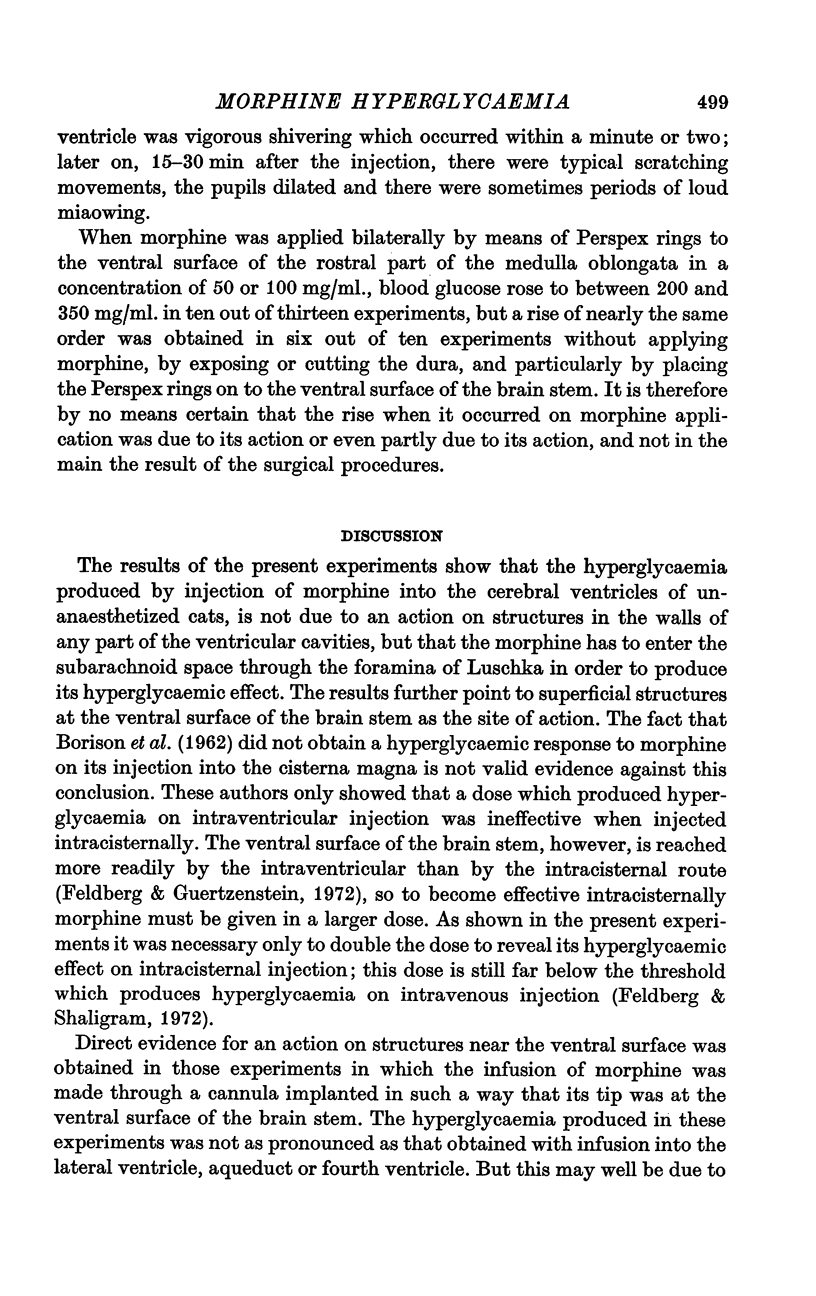
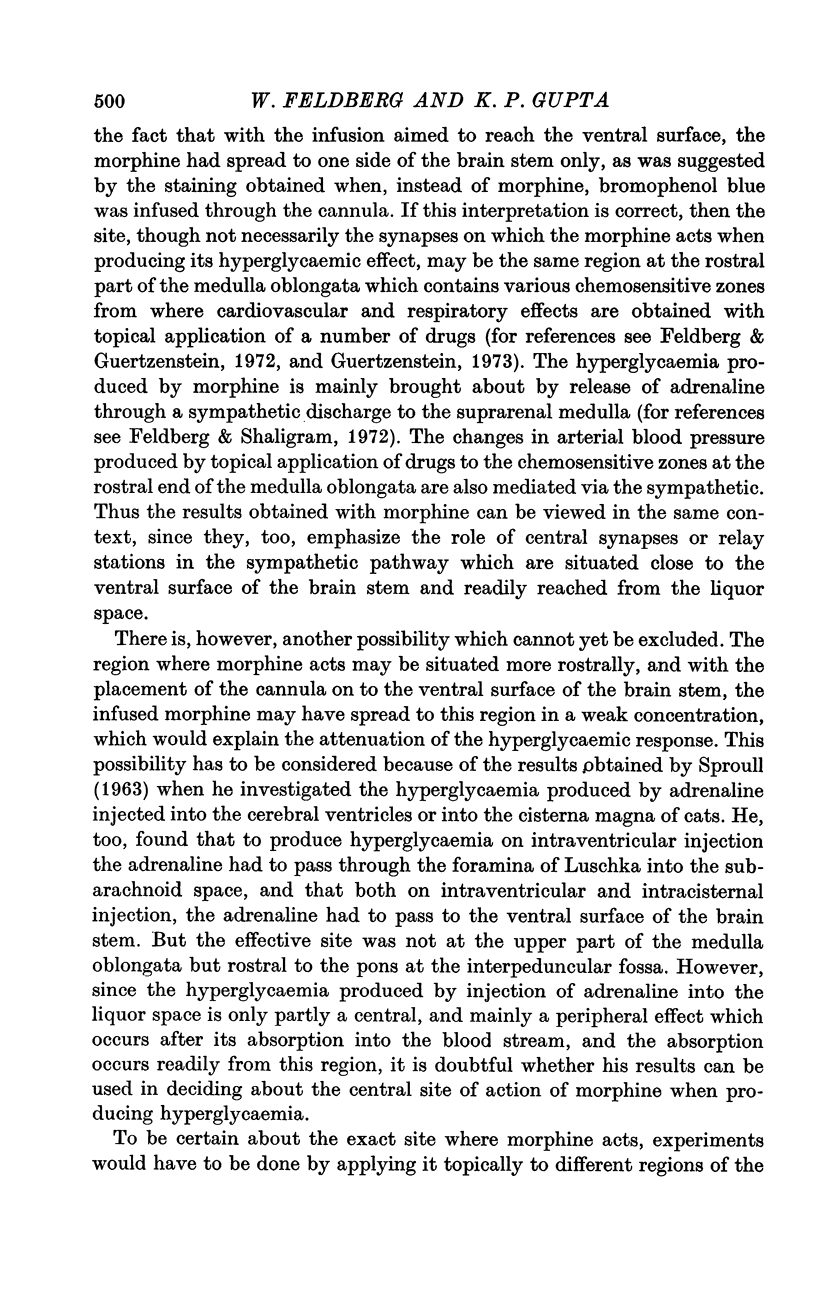

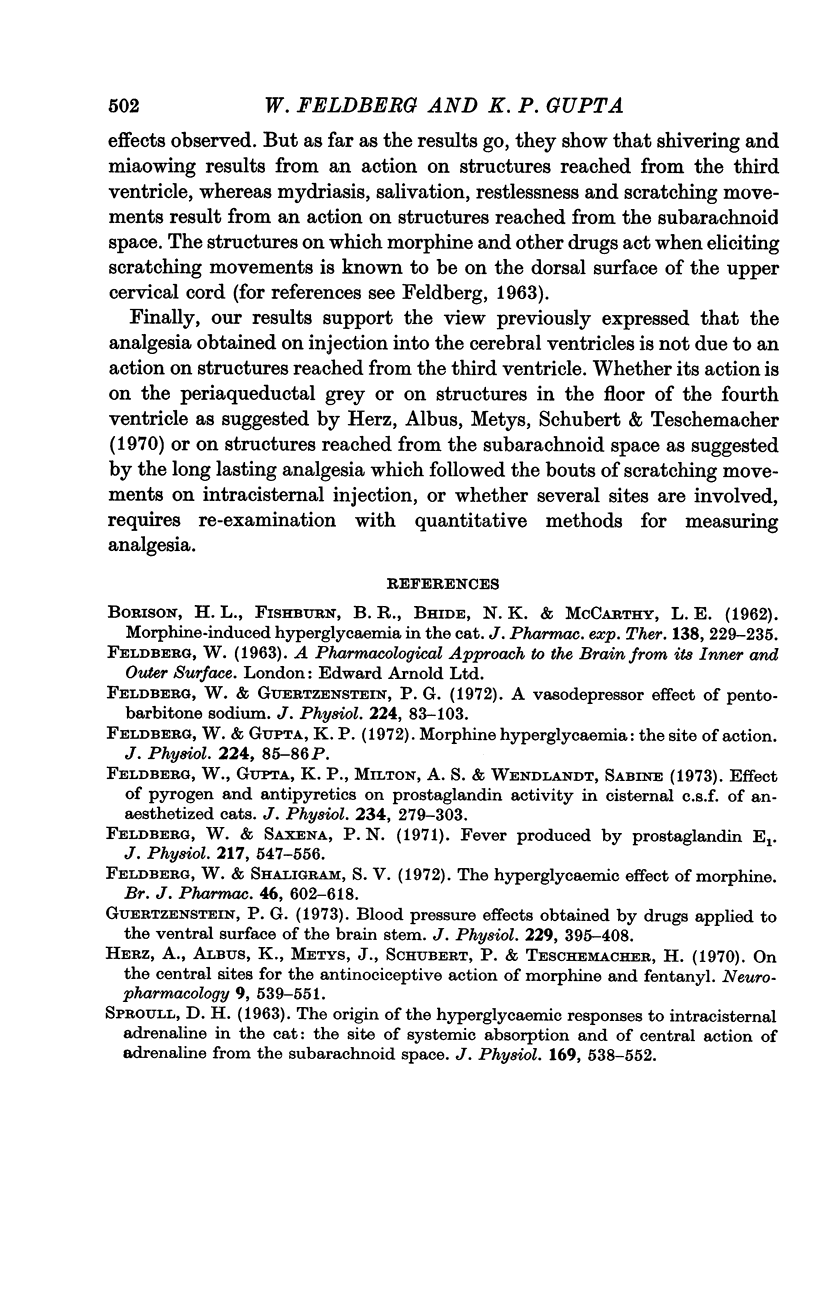
Selected References
These references are in PubMed. This may not be the complete list of references from this article.
- BORISON H. L., FISHBURN B. R., BHIDE N. K., McCARTHY L. E. Morphine-induced hyperglycemia in the cat. J Pharmacol Exp Ther. 1962 Nov;138:229–235. [PubMed] [Google Scholar]
- Feldberg W., Guertzenstein P. G. A vasodepressor effect of pentobarbitone sodium. J Physiol. 1972 Jul;224(1):83–103. doi: 10.1113/jphysiol.1972.sp009882. [DOI] [PMC free article] [PubMed] [Google Scholar]
- Feldberg W., Gupta K. P., Milton A. S., Wendlandt S. Effect of pyrogen and antipyretics on prostaglandin acitvity in cisternal c.s.f. of unanaesthetized cats. J Physiol. 1973 Oct;234(2):279–303. doi: 10.1113/jphysiol.1973.sp010346. [DOI] [PMC free article] [PubMed] [Google Scholar]
- Feldberg W., Gupta K. P. Morphine hyperglycaemia: the site of action. J Physiol. 1972 Jul;224(2):85P–86P. [PubMed] [Google Scholar]
- Feldberg W., Saxena P. N. Fever produced by prostaglandin E1. J Physiol. 1971 Sep;217(3):547–556. doi: 10.1113/jphysiol.1971.sp009585. [DOI] [PMC free article] [PubMed] [Google Scholar]
- Feldberg W., Shaligram S. V. The hyperglycaemic effect of morphine. Br J Pharmacol. 1972 Dec;46(4):602–618. doi: 10.1111/j.1476-5381.1972.tb06887.x. [DOI] [PMC free article] [PubMed] [Google Scholar]
- Guertzenstein P. G. Blood pressure effects obtained by drugs applied to the ventral surface of the brain stem. J Physiol. 1973 Mar;229(2):395–408. doi: 10.1113/jphysiol.1973.sp010145. [DOI] [PMC free article] [PubMed] [Google Scholar]
- Herz A., Albus K., Metys J., Schubert P., Teschemacher H. On the central sites for the antinociceptive action of morphine and fentanyl. Neuropharmacology. 1970 Nov;9(6):539–551. doi: 10.1016/0028-3908(70)90004-3. [DOI] [PubMed] [Google Scholar]
- SPROULL D. H. THE ORIGIN OF THE HYPERGLYCAEMIC RESPONSE TO INTRACISTERNAL ADRENALINE IN THE CAT: THE SITE OF SYSTEMIC ABSORPTION AND OF CENTRAL ACTION OF ADRENALINE FROM THE SUBARACHNOID SPACE. J Physiol. 1963 Dec;169:538–552. doi: 10.1113/jphysiol.1963.sp007278. [DOI] [PMC free article] [PubMed] [Google Scholar]


